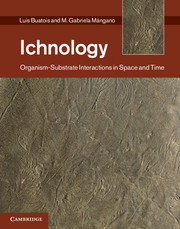Book contents
- Frontmatter
- Contents
- Acknowledgments
- Introduction
- Part I Conceptual tools and methods
- Part II Spatial trends
- Part III A matter of time
- 12 Trace fossils in sequence stratigraphy
- 13 Trace fossils in biostratigraphy
- 14 Trace fossils in evolutionary paleoecology
- 15 Ichnology in paleoanthropology and archaeology
- References
- Index
15 - Ichnology in paleoanthropology and archaeology
from Part III - A matter of time
Published online by Cambridge University Press: 25 October 2011
- Frontmatter
- Contents
- Acknowledgments
- Introduction
- Part I Conceptual tools and methods
- Part II Spatial trends
- Part III A matter of time
- 12 Trace fossils in sequence stratigraphy
- 13 Trace fossils in biostratigraphy
- 14 Trace fossils in evolutionary paleoecology
- 15 Ichnology in paleoanthropology and archaeology
- References
- Index
Summary
And what had he felt, I asked Mario, when he’d seen it there, the huella?
“One thing is to see artifacts presumably made by somebody and another is to see the pisada someone made, what their foot left in the earth. That’s what gives you the sense of humanity, right?”
Ariel DorfmanDesert Memories (2004)
While the previous chapter deals with processes occurring at the scale of deep time, we now move into a more recent past, a time witnessing human activities. For the implications of trace fossils in paleoanthropology, information is based on the study of human fossil footprints (Kim et al., 2008a). Human footprints also play a major role in archaeology, although sources of information are found in many other ichnological datasets, such as bioerosion and bioturbation structures, and other vertebrate tracks as well (Baucon et al., 2008). The aim of this chapter is to review recent research in the area of ichnological applications in paleoanthropology and archaeology. The first half of the chapter will be devoted to review the fossil record of human footprints, from the Pliocene to the Holocene. The second half will explore the uses of ichnology in archaeology.
- Type
- Chapter
- Information
- IchnologyOrganism-Substrate Interactions in Space and Time, pp. 292 - 296Publisher: Cambridge University PressPrint publication year: 2011



